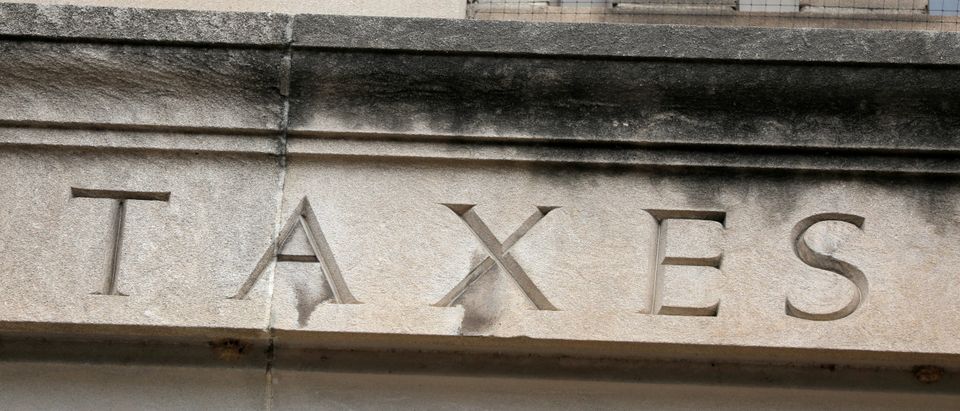July marked the beginning of Fiscal Year 2024 for 46 of the 50 states. It also closes the books on most state legislative sessions in what was an incredible 2023 for hard-working taxpayers.
In recent years, we’ve seen significant income tax relief in the states. Notably, 10 states – Kentucky, West Virginia, Montana, Utah, Arkansas, North Dakota, Indiana, Nebraska, Connecticut, and Ohio – have cut personal income taxes (PIT) in 2023. With the new addition of West Virginia, North Dakota, and Connecticut, 22 states have cut personal income taxes since 2021, with several of these states cutting taxes multiple times during that period. (RELATED: MYRA MILLER: The GOP Should Take ‘Bidenomics’ Seriously. Here’s Why)
Despite the economic turmoil caused by the COVID-19 pandemic, many states have found themselves flush with cash, especially as economies began to reopen. Some of the budget largess can be directly traced back to trillions of federal dollars pumped into the economy – some directly infused into state budgets. Of course, states are facing a long-term trap with the so called “free” federal aid. As the great economist Milton Friedman always said, there is no such thing as a free lunch.
Apart from federal funds however, state tax revenues not only returned to normal but, in most cases, even exceeded previous growth trends. Since 2021, most states have seen healthy surpluses fueled by abundant tax revenue, and, in many cases, are using the surpluses to enact substantial tax relief.
Taxpayers in several of the states that made cuts in 2023 have seen tax relief multiple times in recent years. Ohio and Montana both cut taxes in 2021 and did so again in 2023. Ohio’s cuts, signed on Independence Day, moved the top PIT rate to 3.5% from 3.99%, and Montana’s cuts dropped the PIT rate to 5.9% from 6.5%. Utah, Arkansas, and Nebraska have cut taxes in each of the last three years. Utah’s PIT rate was reduced from 4.85% to 4.65%, Arkansas’ went from 4.9% to 4.7%, and Nebraska’s went from 6.84% to 3.99%.
Other states, such as West Virginia and North Dakota, are joining the Tax Cut Movement for the first time since the movement really took off in 2021. West Virginia reduced its PIT by an average of 21.25%, and North Dakota went from a top rate of 2.9% to 2.5%.
Other states are continuing to reap the benefits of fiscal responsibility by accelerating cuts. Indiana moved up its timeline to get to a 2.9% personal income tax from 2029 to 2027 and eliminated triggers that could have potentially prevented cuts from being enacted. Kentucky also accelerated previous cuts and put itself on a potential path to full elimination of the income tax. The Bluegrass State could become the tenth state with no PIT and be the first to eliminate it since Alaska did so in 1980.
It should also be noted that tax cuts aren’t solely relegated to Red States. Tax reform is proving to be a bipartisan issue. The Kentucky cuts were signed by Democrat Governor Andy Beshear, but perhaps even more astounding is the fact that a state in the northeast, outside of the Live Free or Die State of New Hampshire, also cut taxes. Connecticut, of all places, passed cuts through the Democrat-controlled legislature that were signed by Democrat Governor Ned Lamont. (RELATED: FORMER REP. JASON LEWIS: House Republicans Circle The Wagons And Target Their Own — Once Again)
In almost every case of the cuts enacted this year, the goal seems to be clear: a fairer, less burdensome tax system – a goal that falls right in line with the ALEC Principles of Taxation. In addition to the rate cuts, most of these states reduced the number of brackets, the exception being Kentucky which already has a flat PIT. These changes ride the coattails of the historic 2022 State Flat Tax Revolution which saw five states switch from progressive PIT structures to a flat tax. Lawmakers in these states understand that a less progressive income tax structure is ultimately a better system of taxation since their states will avoid penalizing earned success through hard work.
As Washington’s infamous partisan gridlock continues to inhibit free market reforms that would revitalize our economy and lift real wages, we can continue to look to the states, our 50 laboratories of democracy, to deliver meaningful tax relief to hardworking taxpayers across America.
Jonathan Williams is Chief Economist and Executive Vice President of Policy at the American Legislative Exchange Council. He is coauthor of Rich States, Poor States: ALEC-Laffer State Economic Competitiveness Index. Follow him on Twitter @TaxEconomist.
Nick Stark is Director of the Tax and Fiscal Policy Task Force at the American Legislative Exchange Council. Follow him on Twitter @NJStark7.
The views and opinions expressed in this commentary are those of the author and do not reflect the official position of the Daily Caller News Foundation.
All content created by the Daily Caller News Foundation, an independent and nonpartisan newswire service, is available without charge to any legitimate news publisher that can provide a large audience. All republished articles must include our logo, our reporter’s byline and their DCNF affiliation. For any questions about our guidelines or partnering with us, please contact licensing@dailycallernewsfoundation.org.


